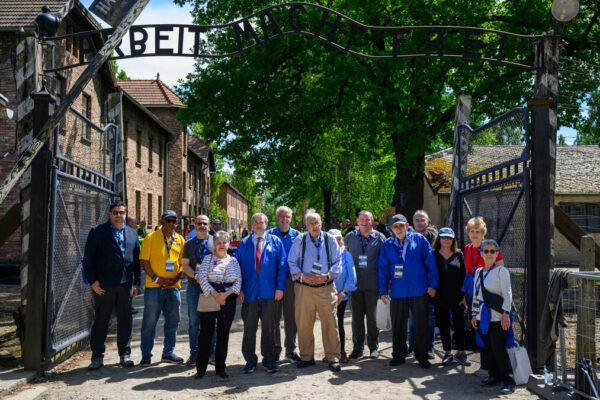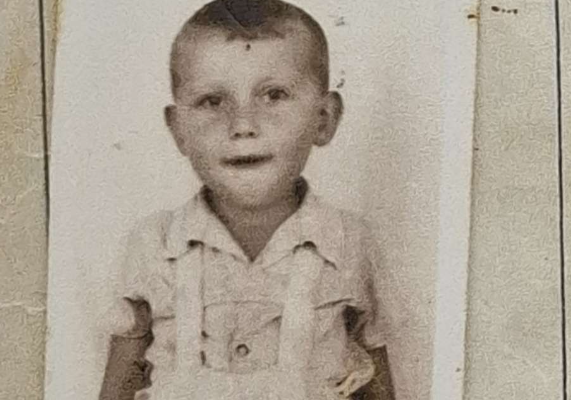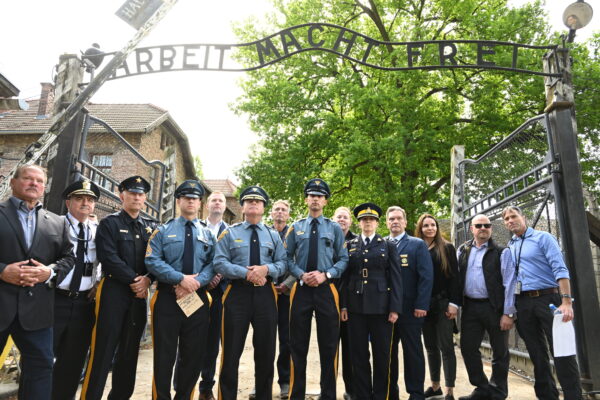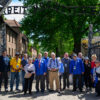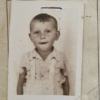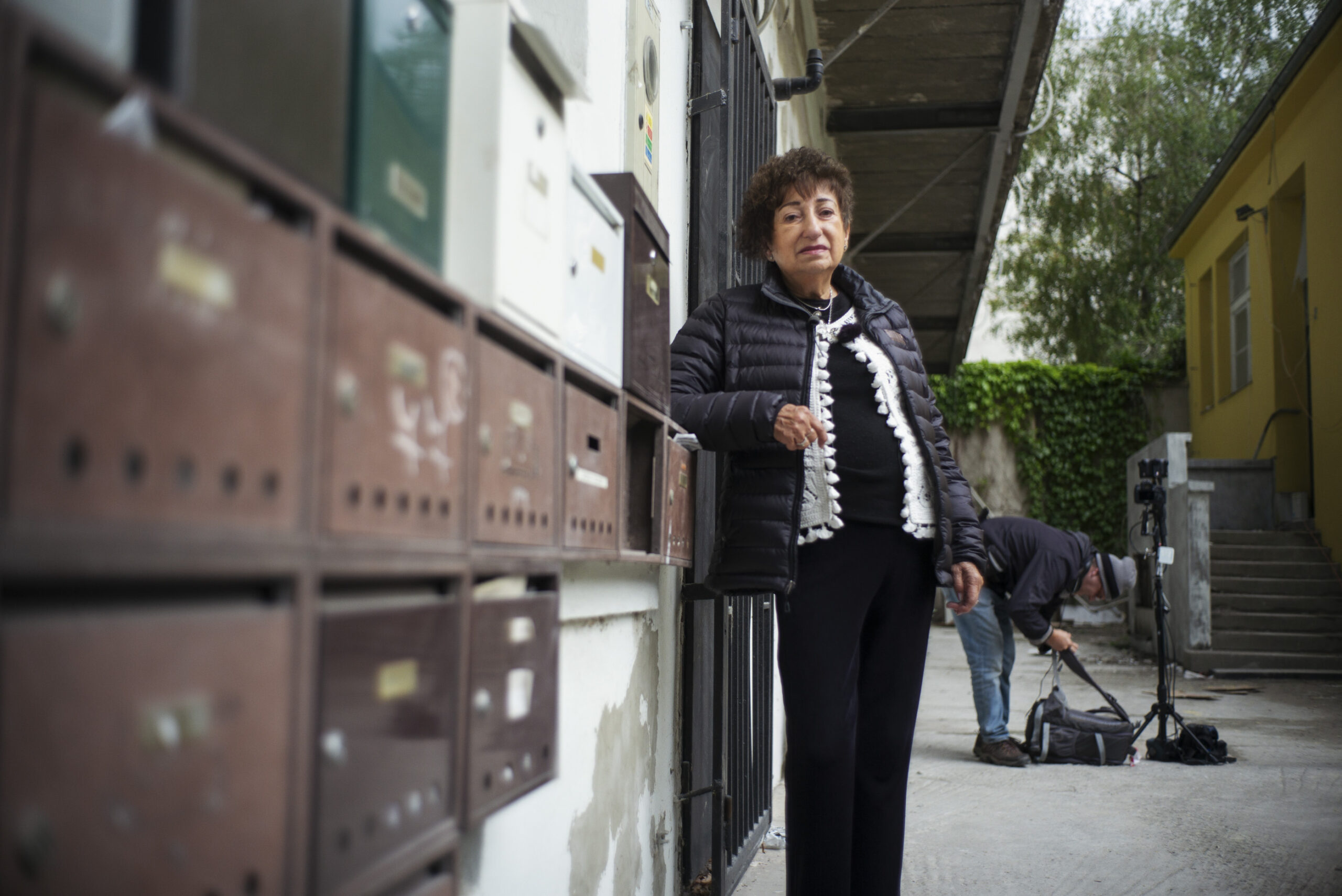
Max Glauben was 13 when his family’s apartment was destroyed in the historic battle of the Warsaw Ghetto Uprising.
Eva Kuper was 2 when her mother’s cousin rescued her from a train in the frantic moments before it headed to the Treblinka death camp.
Both lost parents and other relatives in the Holocaust. And both are among the four Holocaust survivors whose testimonies USC Shoah Foundation is recording this week using cutting-edge, 360-degree filming techniques at the physical locations of their pre-war and wartime experiences, as well as their places of liberation.
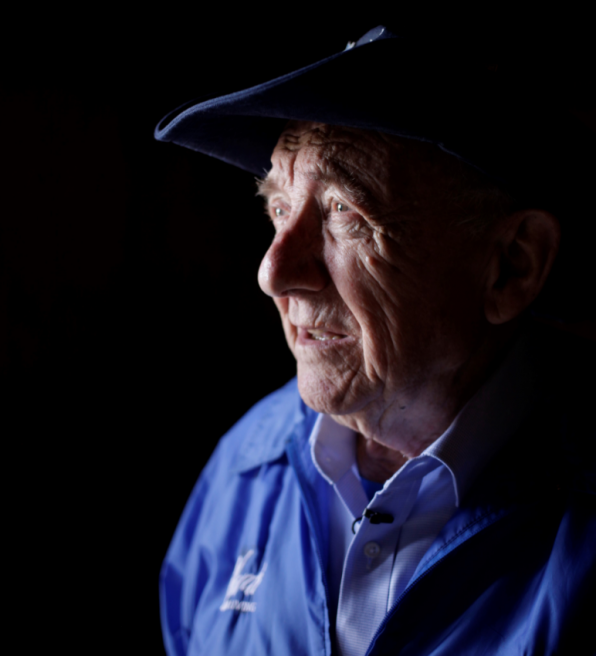
Over the years, some 300 Holocaust survivors have been among the mass of people who make the nearly two-mile march from the main camp at Auschwitz to the sprawling expansion at Birkenau. March of the Living participants also visit other historic sites, such as the Treblinka death camp, Majdanek concentration camp and the Warsaw Ghetto.
To ensure that March of the Living participants can continue to benefit from survivors’ stories relevant to the locations on the tour, USC Shoah Foundation and the March of the Living organization have launched a two-year project to record the new testimonies on site at concentration camps and other personally pertinent and historic locations.
“We need to use the precious time we have to give voice to these remarkable people,” said USC Shoah Foundation Finci-Viterbi Executive Director Stephen Smith. “When these survivors stand in the very places they grew up and witnessed the destructive power that hatred can have, they remind us it can happen to anyone, anywhere, at any time.”
The 360 testimonies will be woven into the annual March of the Living experience, but will also be used for other educational purposes by USC Shoah Foundation.
Eyewitnesses to the Future: March of the Living and USC Shoah Foundation
“These testimonies promise to become cornerstones of future March of the Living trips, when survivors can no longer personally accompany the students, ensuring that the survivors’ memories will continue to guide generations to come,” noted Dr. Shmuel Rosenman, International March of the Living Chairman.
Eli Rubenstein, Director of Education for International March of the Living, added that by using emerging technologies, the project is transforming the way the stories and lessons of the Holocaust are learned by people around the globe.
“This outward-facing radial filming technique in the very locations of the survivors’ personal experiences provides a potent pathway for audiences to experience the survivors’ stories, in a way that words alone could never encapsulate,” Rubenstein said.
This year, shortly after the annual March of the Living at Auschwitz-Birkenau on May 2, USC Shoah Foundation – with March of the Living’s organizational and financial support, along with the generous support of the Sherman Foundations – started recording the stories of Holocaust survivors Max Glauben, Eva Kuper, Max Eisen and Gabriella Karin, in a number of European locales, in the very places their stories unfolded.
Testimonies will be filmed on site at not only Auschwitz-Birkenau, but also at the Warsaw Ghetto memorial, where Glauben’s and Kuper’s families were confined; the Mauthausen concentration camp in Austria, where Eisen was imprisoned; Bratislava, the Slovakian hometown of Karin; and the Majdanek Nazi death camp in Poland, where Glauben’s mother and brother were killed; among other locations.
Evocative stories
The USC Shoah Foundation team – which includes members from various departments at the Institute – began the 12-day production process on May 4 with Glauben at Majdanek, and resumed his testimony on May 6 at the site of the Warsaw Ghetto, where Glauben lived with his family as a boy.
In the spring of 1943, on the first night of Passover, the Glauben family was in their apartment when there was a knock at the door.
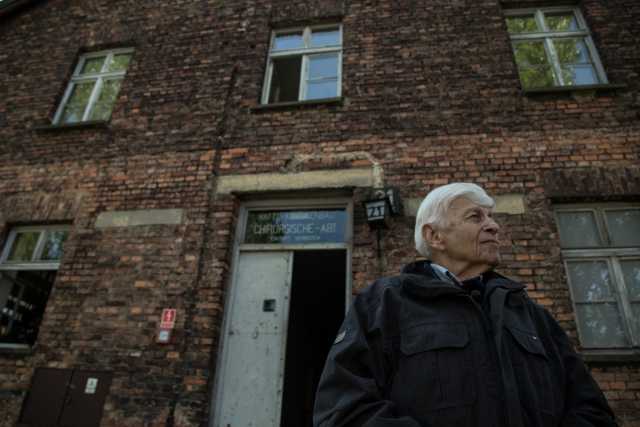
“Everybody was scared and thought it might be the Germans,” Glauben said in the first testimony he gave to USC Shoah Foundation in 1996.
Instead, it was members of the Jewish Underground. Because Glauben’s family lived in an apartment overlooking the street, the fighters wanted to use it for an impending battle. The fighters ushered the family into a shelter below the apartment. Within hours, the Warsaw Ghetto Uprising erupted.
When the Glaubens emerged, their apartment was in smoldering ruins, shot through by shelling.
“It was terrifying,” Glauben said in the testimony. “But it was outsmarting the Nazis and accomplishing what we wanted to accomplish in the best way that we could.”
Glauben’s new 360-degree testimony was also filmed at the Majdanek death camp in Poland, where his mother and brother were murdered. (Glauben’s father later died at another camp.) Majdanek is now a museum with a mausoleum that contains the ashes of victims.
His granddaughter, Hayley Glauben, attended the filming at Majdanek, and spoke with the USC Shoah Foundation.
“When I first walked up and saw the ashes, it was a moment where I thought, ‘That’s my whole family there, except for him,’” Hayley said. “It’s horrifying to think that had I been born 50 years earlier, 40 years earlier, that would be me in there.”
The team also filmed Eva Kuper speaking to a group of March of the Living student participants from BBYO (formerly the B’nai B’rith Youth Organization) this week at the Umschlagplatz monument near the Warsaw Ghetto, where she shared her incredible story of survival. A key moment had occurred at the very same spot to Kuper, who was born Eva Kupferblum in 1940.
The 2-year-old Eva was in the arms of her mother on a train bound for the Treblinka death camp when a woman outside yelled at her, pointing to Eva: “That is my baby!” The woman, Regina, was her mother’s cousin; she worked at the ghetto prison and had yet to be deported. The opportunity was not lost on Eva’s mother, who handed Eva over. Regina was allowed to leave with Eva, who survived by hiding in various places, including with Polish nuns in a village. Regina was later deported and murdered in Treblinka.

The USC Shoah Foundation team also filmed part of Eva Kuper’s story at the Treblinka Nazi death camp in Poland.
“There were between 700,000 and 900,000 people murdered here,” Kuper says on camera, walking through the camp. “Among them, my mother.”
Hayley Glauben said when she found out that her grandfather was asked to participate, it gave her chills.
“My children and my grandchildren and great grandchildren are going to be able to see him and hear his story forever,” she said. “His legacy is going to live on.”
